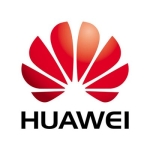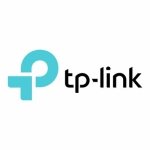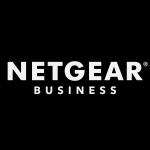Valuable Features
It's very adaptable from the access point line. We've found that ClearPass products have met our performance marks to the letter. They sold us on foundations stats and provided us with everything we asked for. They didn't come up short and were dead on the money.
Improvements to My Organization
It's provided our students with such reliable service that they just expect it to be there and take it for granted. They come to school, blackboard their work, get on YouTube, chat with friends, etc., and then go home, not realizing that they used the college network. We've been able to give them the best experience possible, and their feedback has been amazing. If there are ever any hiccups, the complaints and tickets pile up very quickly.
Our users, for the most part, haven't noticed hiccups because of the HA capability and the speed at which the controllers can authenticate. In fact, the last couple updates have boosted the quality and redundancy. Students have been able to watch YouTube videos without any noticeable rendering issues during hiccups.
We have a few IAP's and that's sort of like the standalone home router stuff. They're lacking in functionality, and though they are designed for standalone small deployments, they don't give you the good standalone fun stuff that you expect on a smaller scale router, like good DLNA. I wish they were a little bit more progressive on their IAP line.
Room for Improvement
Before HP bought Aruba, the release dates for codes were very predictable and quick. Code release were always visibly available. But since HP's acquisition, normal and quarterly release dates have been delayed, probably because of continued integration between the two companies. One specific issues is that we want to deploy their latest and greatest AP, but they don't have a GA code version available yet. We're still waiting.
I know that's a very specific complaint, but it actually has impacted us because we keep a flush on the older access points on hand just in the event code gets delayed by a few weeks. It's now been delayed by a month to two and I have to buy older access points. I can't deploy the latest and greatest.
I'm hoping things get smoothed out when they start getting their product lines and their flow of products and code deployments get fixed. I've been a little disappointed in that.
Also, I've found some of their onboarding stuff to be overkill and not worth the price. Their base stuff that's included in ClearPass is absolutely amazing, but the fringe things are superfluous and overcharged. The core stuff, though, is exactly what you pay for.
Use of Solution
We're essentially an Aruba shop. We have uniform wireless AP's ranging from AP 125's, which are slowly going to be de-commissioned on our next product cycle, all the way up to AP 325's in our fleet. We have three 7240 controllers, and one 7210 controller as our test platform box that we use for benchmarking and a few other projects. They're basically fully-licensed and we are basically all-wireless. We do not have any HP switching gear in-house or Aruba switching gear. All of this is controllers and access points for the hardware side. For the software side, we have AirWave, which monitors our entire wireless fleet in controllers, and ClearPass. We have three ClearPass appliances -- one is a hardware box and another is a VM box. Both of them are 25K units and one 5K unit appliance, as well as hardware.
We've been using them for about 10 years I would say, maybe nine years.
Deployment Issues
It deploys extremely quickly.
Stability Issues
The controller is a rock solid 10 out of 10, the access points are 9.5 out of 10, ClearPass is 10 out of 10, and AirWave is 9 out of 10.
Scalability Issues
It scales incredibly well. We did have some scalability issues with the system a long time ago, but they fixed that rather quickly. We also changed product lines at around that time. We were outgrowing the product a little bit too quickly, but since we've moved to the new controllers, it's been rock solid.
Customer Service and Technical Support
Technical support is very good, but it's dependent on the engineer you get. Sometimes you'll get a fantastic engineer and your problem is solved right away. Sometimes you might have to jump through a few more hoops. Sometimes you get the Cisco experience where you must follow the bouncing ball and complete all the 10 questions. You know how your product works, you don't need to complete 10 questions. You have a problem and want an engineer who can solve this really quickly.
I've noticed that it's been getting better over time. It used to be bad about four years ago. Over the last two to three years, it's been getting a lot better. As long as you fill out the surveys, I tend to find that the service has been getting better and better and better. You get your resolution pretty quickly. So I'm generally quite happy with the tech calls.
I've noticed they've scaled back a little bit of their SE's. I guess that's because they're such a big company.
Initial Setup
The initial setup tends to be both straightforward and complex. Although I haven't done an initial setup in a while, everything just clicks together very well. When I did do an initial setup, the wireless controller was up and running within a few minutes. Deploying new controllers into the cluster takes seconds. There are a lot of wizards and guides built into the controllers for setup. So it's very easy.
ClearPass is a little harder, and AirWave is medium difficulty. ClearPass is the hardest part to get going without a good amount of training.
Pricing, Setup Cost and Licensing
Day-to-day costs are generally very low. We have very few problems with the system, so our maintenance costs and hours that we put into solving problems is generally very low, which makes my life really easy to work on other issues that come up. Our wireless system generally doesn't generate a lot of day-to-day issues.
Initial costs for purchasing the system? It's on par with other vendors, but is a little bit cheaper than the equivalent of what we were getting out there, so I feel that we got really good value.
Other Advice
Make sure you buy the system that suits your network. They have a very broad pallet, so you can buy one that's overkill and buy one that's underkill. Make sure you spec and follow the guides appropriately. Also, you have to have a very good concept of how fast you're going to grow and how much you're going to grow because if you don't have a really good idea of what your growth curve is going to look like, you can easily buy something that doesn't fit perfectly.
Proper planning for scaling, and knowing what your growth curve is going to be is key. Work with the SE's on figuring out the plan is very important. Aruba has a very broad product line on scalability, so that can hurt you and help you at the same time. It is very nice to have.
Disclosure: PeerSpot contacted the reviewer to collect the review and to validate authenticity. The reviewer was referred by the vendor, but the review is not subject to editing or approval by the vendor.















I just took the latest refresher course on product and architecture and Aruba is even better now. Exciting stuff happening!